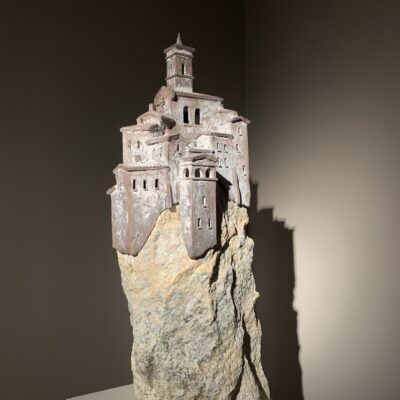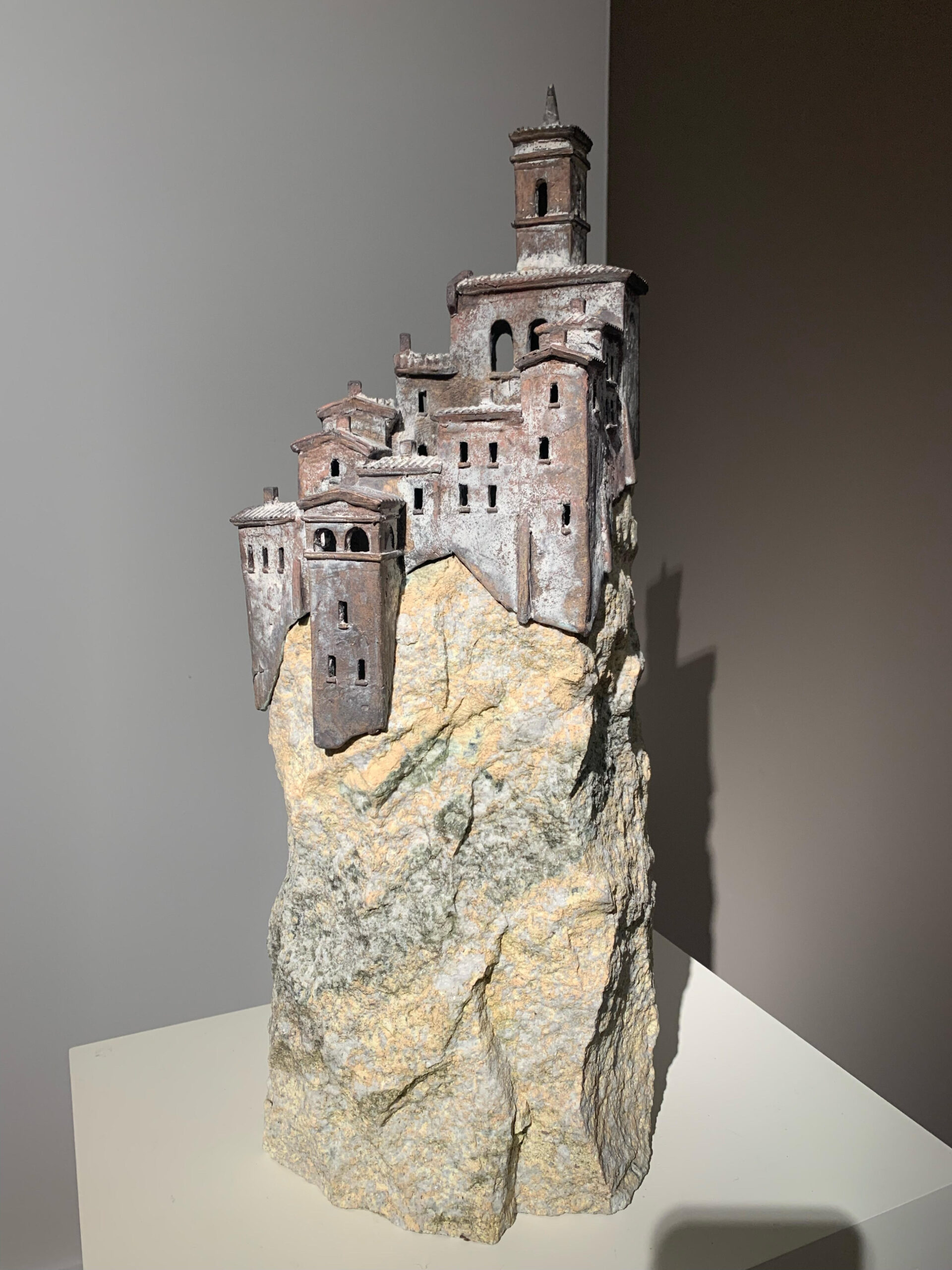
Tom Seerden
“You desire to create something that isn’t there yet, that non one else has done before”, say the Dutch artist Tom Seerden. With his head filled with inspiration, he shows the beauty of Italian landscapes in bronze on a pedestal of natural stone or wood.
The bronze landscapes of Tom Seerden
The design of Tom Seerden’s bronze landscapes starts with the pedestal. These are oak beams, that he has in stock from his old family home, or nature stone such as slate, quartz, travertine, granite or alabaster. These stones he procures from a stonemason. Sometimes a pedestal and a sculpture are in the same hue, other times there is a contrast. Tom first figures out which sculpture fits the specific pedestal. He takes into account the colors, but also the lines of the word or the drawings that are embedded into the stone by nature.
Tom: “When I am on the go, I am always searching for the harmony in a landscape. Try it. It all starts by thoroughly looking, at the hills, the stones, the placing of these villages and cities in the landscape, the colors… That is why Italy is so amazing? In many places one can look at villages and cities from multiple angles. Twenty years ago I was able to observe Siena from a distance. Recently I was in the same spot and what I saw, was still exactly the same. Italy maintains its landscapes. They cherish them, show pride in them. It’s such landscapes that touches me deeply and sticks with me. Thusly the villages and houses, the monasteries and castles of my sculptures get their shape.”
What follows is the tradition process of dirtying ones hands with wax. Tom sculpts, molds the material, like an architect would. The building, the roofs, the windows, the stairs are all shapes with great care for detail. This process continues until the sculpture is just right. Only then can it be brought to a bronze caster. Typical for Seerden’s work is the red tint to his bronzes. Sometimes a bit of gravel from the mold sticks to the bronze. But the artist prefers these rough edges, it doesn’t have to be perfect.
Tom: “Pay attention to the following when you look at my works: the proportions between the sculpture and the pedestal are of utmost importance. That needs to be right. Careful viewers will note that the sculpture is just a bit bigger than it would be in reality. By exaggerating a little, I give my landscapes more room to breathe in the environment in which they will end up.”
Life as an artist
Tom: “Nothing is more wonderful than to walk to your studio in the morning and think about your to do list. Life as an artist is ever-changing. The imagining, creating, finetuning, polishing. But also the contacts with the bronze casters, galleries and clients. Because of galleries my work has fans all around the world. It’s great when buyers later on send me a picture of ‘their’ sculpture. To meet clients, I also love to go to fairs. Sometimes more than 30.000 people a day pass by my works. Then there are the few that recognize themselves in my sculpture, and that is great to experience.”
Tom started his career as an artist in the late eighties with more abstract pieces, his goal was to provoke thought. He evolved into a more realistic style. That’s what he feels most comfortable with. “Your work is more easily recognizable to people and they are able to identify themselves with it. If that match is there, then I am pleased.”
Works











